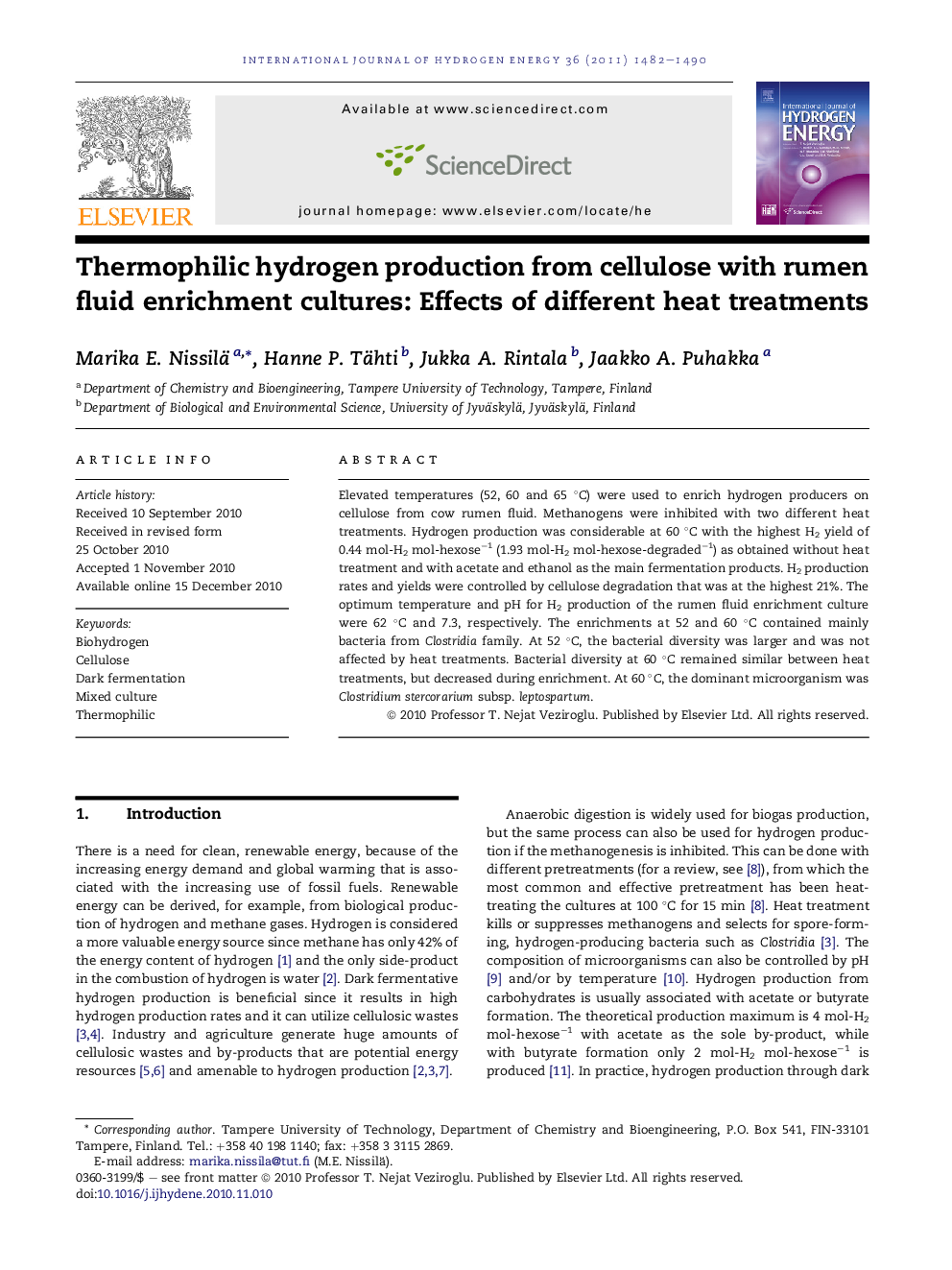| Article ID | Journal | Published Year | Pages | File Type |
|---|---|---|---|---|
| 1272315 | International Journal of Hydrogen Energy | 2011 | 9 Pages |
Elevated temperatures (52, 60 and 65 °C) were used to enrich hydrogen producers on cellulose from cow rumen fluid. Methanogens were inhibited with two different heat treatments. Hydrogen production was considerable at 60 °C with the highest H2 yield of 0.44 mol-H2 mol-hexose−1 (1.93 mol-H2 mol-hexose-degraded−1) as obtained without heat treatment and with acetate and ethanol as the main fermentation products. H2 production rates and yields were controlled by cellulose degradation that was at the highest 21%. The optimum temperature and pH for H2 production of the rumen fluid enrichment culture were 62 °C and 7.3, respectively. The enrichments at 52 and 60 °C contained mainly bacteria from Clostridia family. At 52 °C, the bacterial diversity was larger and was not affected by heat treatments. Bacterial diversity at 60 °C remained similar between heat treatments, but decreased during enrichment. At 60 °C, the dominant microorganism was Clostridium stercorarium subsp. leptospartum.
Research highlights► Thermophilic, cellulolytic, hydrogen producing microorganisms can be enriched from rumen fluid. ► The optimum temperature and pH for H2 production of the rumen fluid enrichment culture are 62 °C and 7.3, respectively. ► Hydrogen production rates and yields are controlled by cellulose degradation. ► Bacterial diversity at 60 °C remains similar between heat treatments, but decreases during enrichment. ► Bacteria closely related to Clostridium stercorarium subsp. leptospartum are mainly associated with cellulose degradation and hydrogen production at 60 °C.
